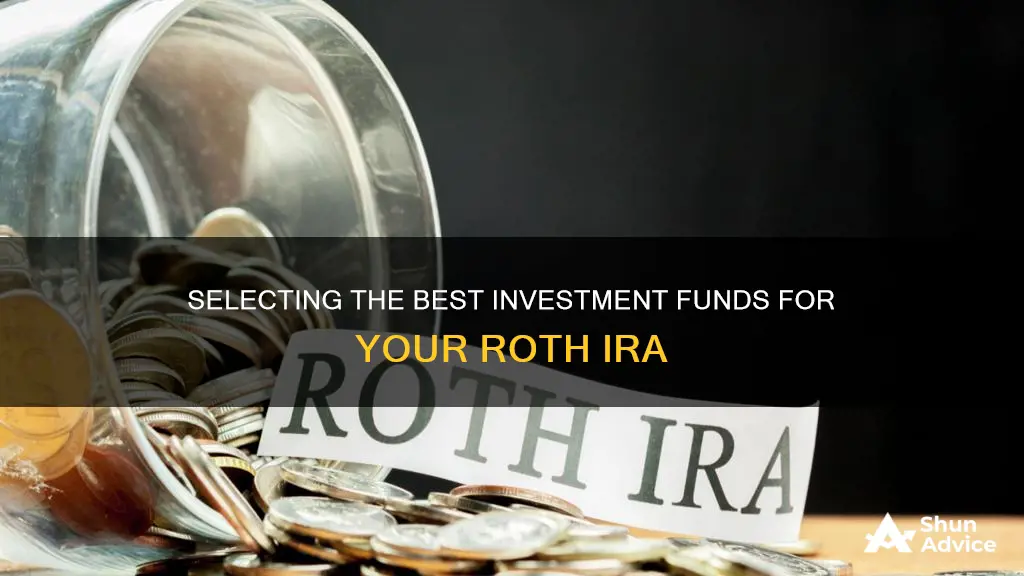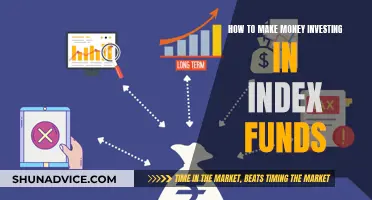
A Roth IRA is a special type of retirement account that allows you to pay taxes on contributions upfront and then benefit from tax-free withdrawals in retirement. When choosing investment funds for a Roth IRA, it's important to consider your financial goals, risk tolerance, and time horizon. Here are some key factors to keep in mind when selecting investment funds:
- Asset Allocation: Diversify your portfolio across different asset classes, such as stocks, bonds, and cash. The specific allocation will depend on your risk tolerance and investment goals.
- Risk Tolerance: Evaluate your comfort level with risk and how much volatility you are willing to accept. This may change as you get closer to retirement.
- Investment Options: Consider a mix of individual stocks, bonds, mutual funds, exchange-traded funds (ETFs), and other securities. Diversification can help reduce risk and improve long-term returns.
- Fees and Expenses: Minimize investment fees and expenses to maximize your returns. Compare expense ratios and management fees across different investment options.
- Time Horizon: Consider your investment timeline, especially if you are investing for the long term. Generally, younger investors can tolerate more risk, while older investors may want to focus on more conservative investments.
- Tax Implications: Understand the tax implications of different investment options. Some investments may offer tax advantages that are redundant within a Roth IRA, while others may benefit from the tax-free growth it offers.
| Characteristics | Values |
|---|---|
| Tax treatment | Contributions are made with after-tax dollars and can be withdrawn tax-free after age 59 1/2 |
| Investment options | Stocks, bonds, mutual funds, exchange-traded funds (ETFs), dividend stock funds, target-date funds, robo-advisors, REITs, cryptocurrencies |
| Investment fees | Low fees are preferable |
| Diversification | Diversification is important to reduce risk |
| Risk | Should be balanced with potential returns |
| Time horizon | Consider how long the money will be invested |
| Tolerance for risk | Should be assessed to determine the appropriate asset allocation |
| Age | Younger investors can take on more risk, while older investors may want to reduce risk |
| Financial situation | Consider the certainty of your financial outlook |
| Investment mix | Should reflect your risk tolerance, investment timeframe, and financial situation |
What You'll Learn

US stock index funds
When choosing a US stock index fund, you can select either a total market fund or an S&P 500 index fund. A total market fund attempts to replicate the performance of the entire US stock market, including small-cap and mid-cap stocks, whereas an S&P 500 index fund focuses solely on large-cap stocks. Small- and mid-cap stocks may offer higher returns, but they also tend to be more volatile.
When investing in US stock index funds, it's important to consider your risk tolerance and time horizon. If you are comfortable with higher risk, you may want to allocate a larger portion of your portfolio to US stock index funds. On the other hand, if you are risk-averse or approaching retirement, you may want to reduce your allocation to these funds and increase your exposure to income-oriented assets such as bonds.
Hayman Capital Master Fund: A Smart Investment Strategy
You may want to see also

US bond index funds
When constructing a portfolio for your Roth IRA, you have a variety of investment options to choose from. A Roth IRA is a type of tax-advantaged individual retirement account that allows your investments to grow tax-free.
A low-cost US bond index fund will track a US aggregate bond index, providing investors with broad exposure to this less risky asset class. An aggregate bond index typically includes exposure to treasuries, corporate bonds, and other types of debt securities.
For a long-term retirement portfolio, most investors want exposure to both stocks and bonds, which can be achieved through a single stock index fund and a single bond index fund, or through a "balanced fund," which holds both stocks and bonds.
The exact proportion of stocks to bonds in your portfolio will depend on various factors, including your proximity to retirement age, your life expectancy, your risk tolerance, your financial goals, and your growth priorities.
Based on historical performance data, a traditional investment approach has been to allocate 60% of your portfolio to stocks and 40% to bonds. This strategy can be adjusted as you get closer to retirement, gradually increasing the proportion of bonds.
Another popular guideline is the "100 minus your age" rule, which suggests that the percentage of your portfolio allocated to stocks should be 100 minus your age. For example, a 30-year-old investor would allocate 70% to stocks and 30% to bonds.
However, given that people are living longer, some financial experts, including Warren Buffett, recommend maintaining a higher percentage of stocks in your portfolio to ensure that your savings continue to grow well into retirement.
A broad-based US bond or fixed-income fund is generally less susceptible to loss of value over the long term compared to an equity fund, but it may provide lower returns. US bond index funds can be a useful tool for risk-averse investors and those seeking to diversify their portfolios.
Invest in Fidelity's Free Index Funds: A Step-by-Step Guide
You may want to see also

Global stock index funds
When selecting a global stock index fund, look for funds that track a wide range of international markets, including both developed and emerging economies. Some examples of indexes that global stock index funds might track are the MSCI ACWI (Morgan Stanley Capital International All Country World Index) Ex-US and the EAFE (Europe, Australasia, Far East) Index. These funds provide broad geographic diversification at a relatively low cost.
When selecting a global stock index fund, it is important to consider the fund's expense ratio, which is the percentage of your investment paid annually as a management fee. While some global stock index funds have expense ratios of around 0.1%, others may be higher, depending on how specialized the fund is.
In addition to expense ratios, it is also essential to consider the fund's performance and how closely it tracks its underlying index. The best global stock index funds will have performance that is very closely correlated with the index it tracks.
- IShares Core MSCI Total International Stock ETF (IXUS)
- Vanguard FTSE All-World ex-US Index Fund Admiral Shares (VFWAX)
- IShares Core MSCI Emerging Markets ETF (IEMG)
Remember, when selecting any investment for your Roth IRA, it is important to consider your own financial situation, risk tolerance, and investment goals.
Finding Investment Funds: A Comprehensive Guide to Sources
You may want to see also

Dividend stock funds
Dividend-earning stocks and mutual funds can help your retirement portfolio grow more quickly, as long as you reinvest the dividends. Dividends earned in a taxable account benefit from being taxed at lower capital gains tax rates.
Earnings on investments within a Roth IRA, including dividends, grow on a tax-free basis and are not subject to taxation when withdrawn, provided you are over the age of 59 1/2 and have owned the account for more than five years.
When choosing dividend stocks for your Roth IRA, look for companies that have a long history of paying dividends, such as Dividend Aristocrats, Dividend Kings, and Dividend Champions. These companies have consistently increased their dividends over time, which can help your retirement savings grow faster.
Additionally, consider the dividend yield and payout ratio of the stocks you're considering. The dividend yield is the annual dividend payment divided by the stock price, and it indicates the return you can expect from the dividend. The payout ratio is the percentage of a company's earnings that are paid out as dividends, and it can give you an idea of how sustainable the dividend is. A payout ratio that is too high may indicate that the dividend is not secure, while a low payout ratio may mean the company is retaining more profits for growth.
In summary, dividend stock funds can be an excellent option for your Roth IRA due to their relative safety, tax advantages, and potential for strong returns. By choosing established companies with a history of dividend growth and considering key metrics like dividend yield and payout ratio, you can build a solid dividend portfolio within your Roth IRA to help fund your retirement.
Strategies for Investing in VC Funds: A Guide
You may want to see also

Target-date funds
However, one potential downside of target-date funds is that they may cost more than other funds due to their extra management. Additionally, the automatic adjustments made by target-date funds mean that investors cannot adjust allocations if their risk tolerance changes. It is also important to note that while target-date funds are designed to meet an investor's needs through retirement, there is no guarantee that the funds will generate the desired income.
Schwab Fund Investment: A Beginner's Guide to Getting Started
You may want to see also
Frequently asked questions
A Roth IRA is a special individual retirement account (IRA) in which you pay taxes on contributions, and then all future withdrawals are tax-free. Contributions to these accounts aren't tax-deductible, but money grows tax-free and can be withdrawn tax-free after age 59½.
There is no one-size-fits-all option, but look for assets that offer diversification, feature low fees and provide the right level of risk. Some common investment funds for a Roth IRA include:
- U.S. stock index funds
- U.S. bond index funds
- Global stock index funds
- Dividend stock funds
- Target-date funds
A Roth IRA allows you to enjoy tax-free investment growth and tax-free withdrawals once you reach 59½ and the account has been open for five years.
The biggest downside of a Roth IRA is you can't deduct your contributions like you can with a traditional IRA or 401(k). As a result, it won't help you reduce your tax burden now.







